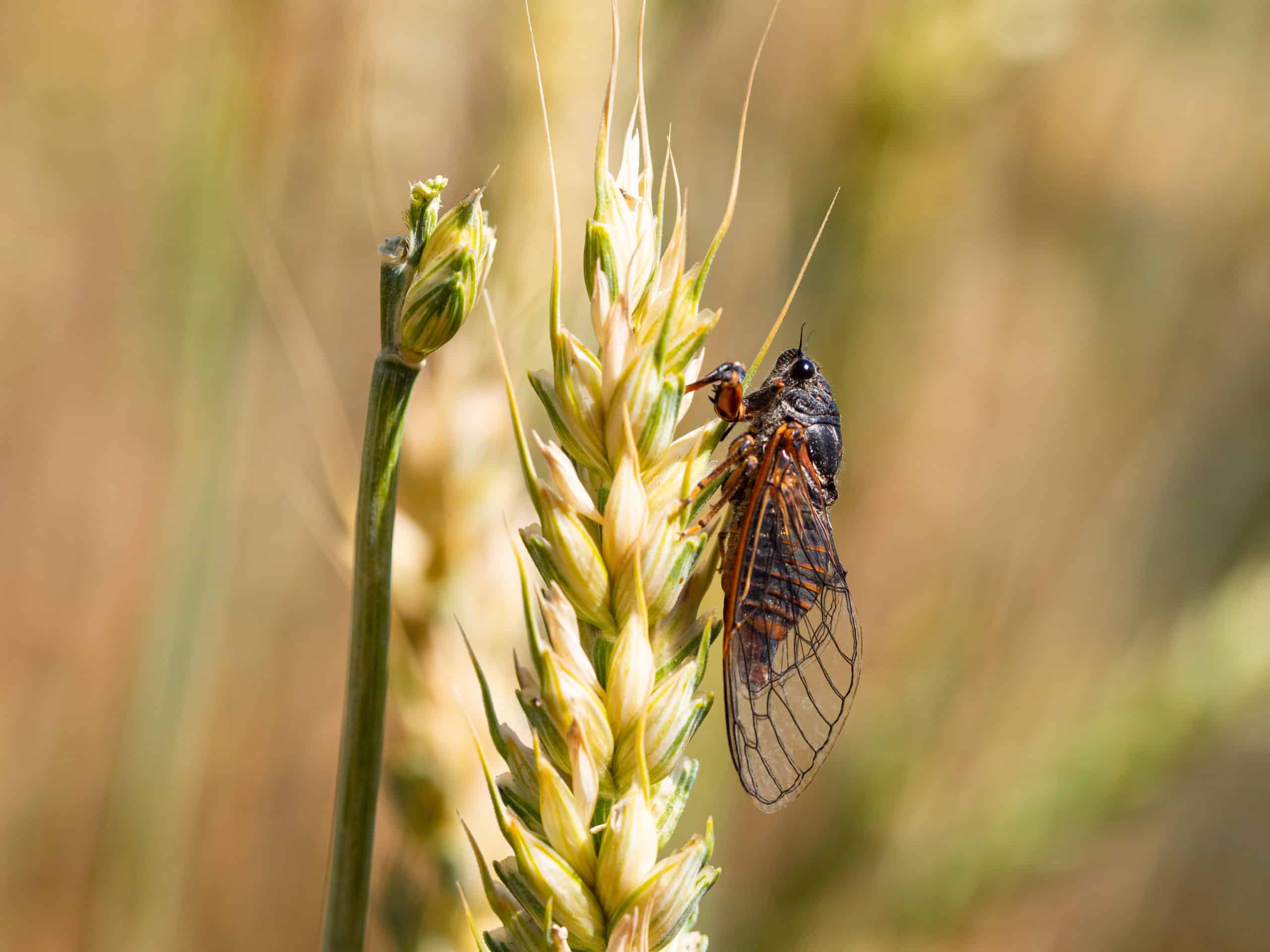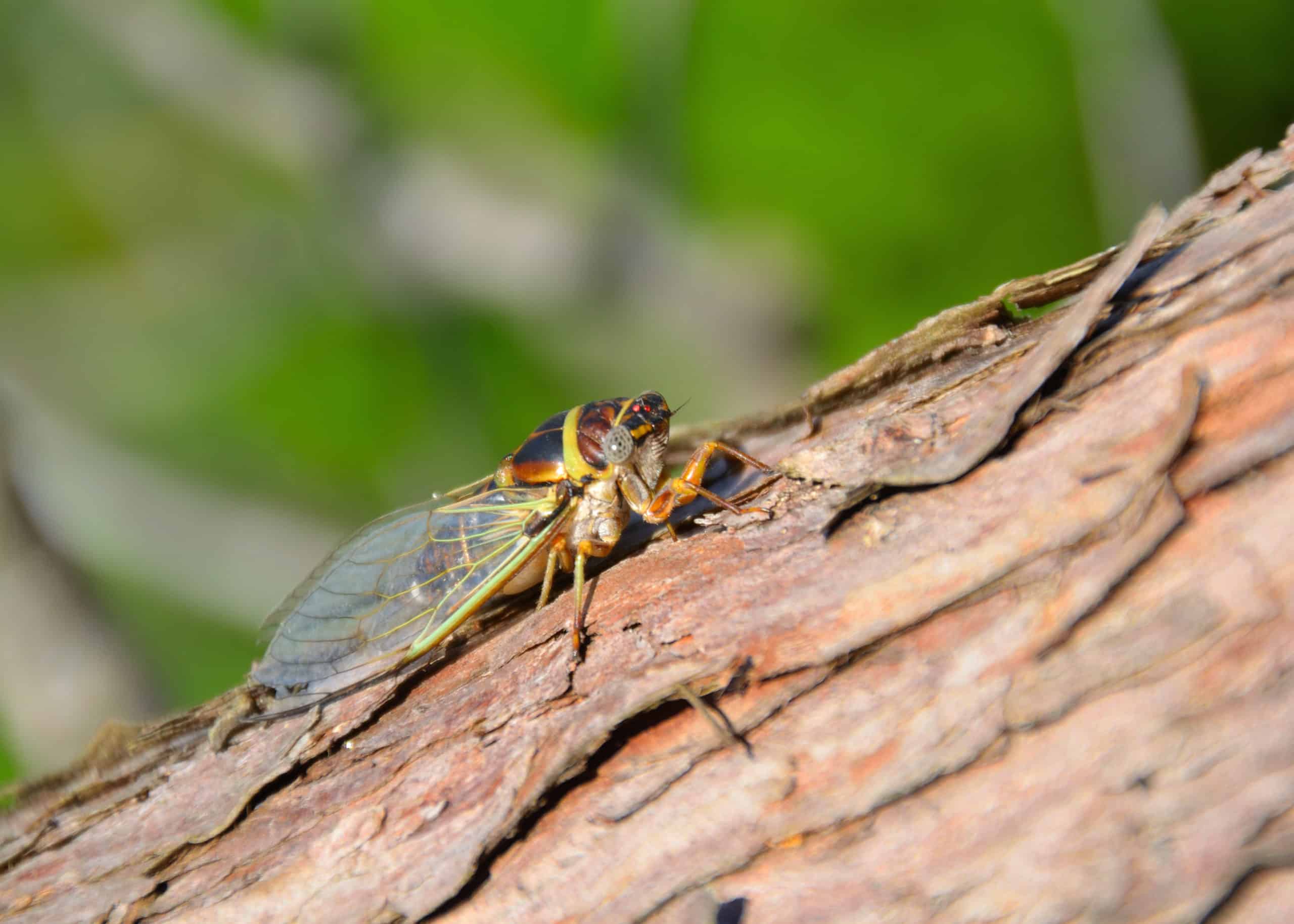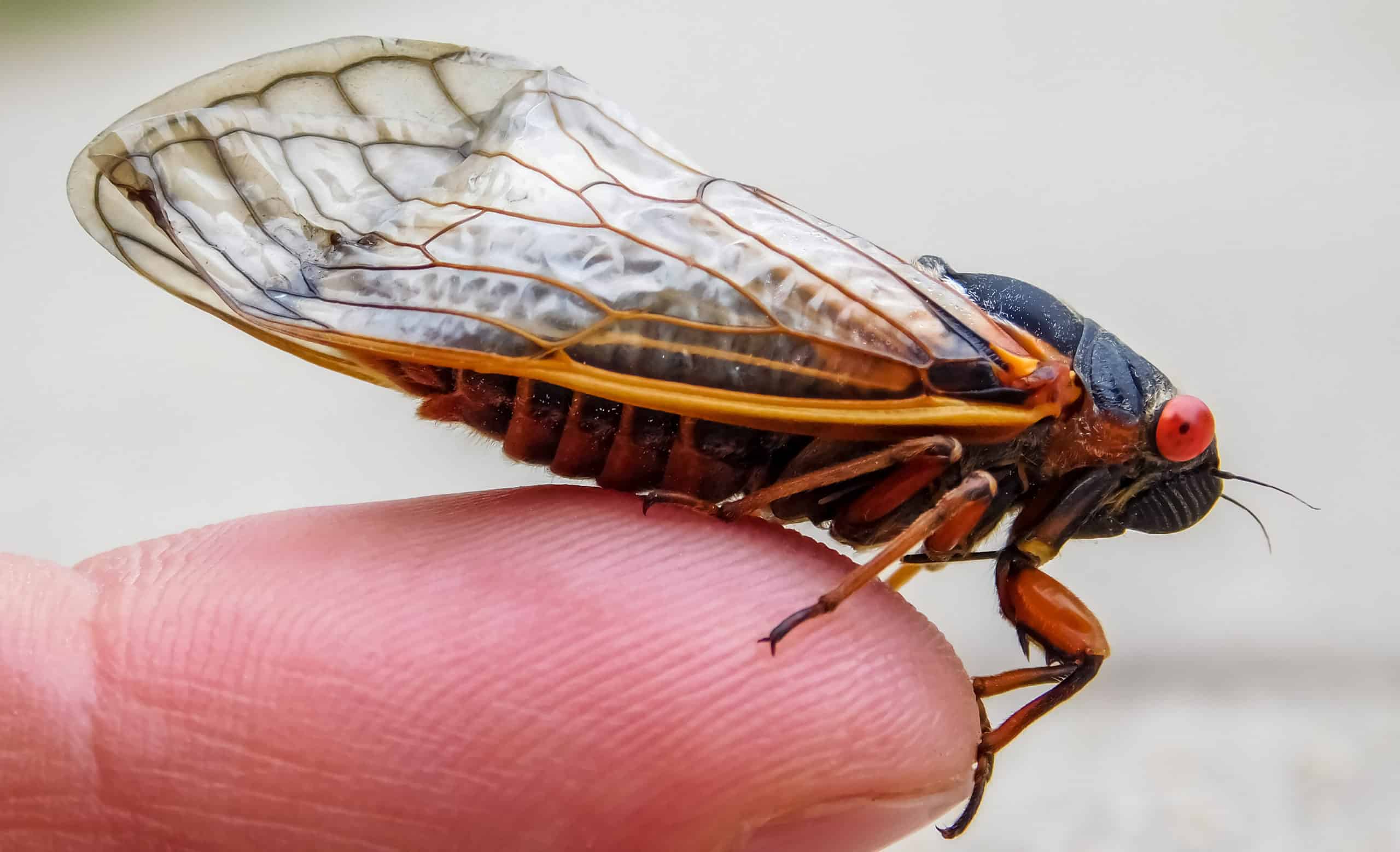The Season of the Cicada
The Season of the Cicada
Cicadas 101
Cicadas are invertebrates that belong to the order Hemiptera, meaning that they are considered “true bugs.” Their superfamily, Cicadoidea consists of roughly 3,400 different subspecies of cicadas, of which, there are two primary sub-groups: annual cicadas, and periodical cicadas. Contrary to what their name suggests, annual cicadas can sometimes appear every other year or every three years instead of a yearly emergence, depending on the particular species. As for periodical cicadas, their broods emerge once in about 10 – 20 years. Cicadas are fairly large bugs with the ability to grow up to 2.25 inches in length. Their semi-transparent wings extend beyond the length of their bodies, folded in a tent-shape over their backs, and they have large, compound, bulging eyes. Most cicadas have bodies that are green, brown or black, and their eyes can be brown, black, dark grey, or even a striking red. Annual cicadas can be found in various areas throughout the world; however, periodical cicadas are distinctively found in the United States. Here in the Chicagoland area, we are prone to getting our fair share of both of these types of cicadas. 
Why Are There Cicada Seasons?
Compared to many other insects, cicadas have notably long lifespans which is often considered possible due to a long period of time spent underground as adolescents. Depending on the particular subspecies, the life cycles of cicadas can vary drastically from 3 years to even 20 years long. The majority of their lives is spent in this underground state as young nymphs, where they feed on the natural fluids contained within roots. This time provides a safe space for the insects to grow and thrive without predators, thereby allowing them not only to experience longer life spans, but also better survival rates for the species as a whole. Experts at Virginia Tech University describe the leading theory behind the surprisingly long marvel of some cicada brood cycles saying, “Research and mathematical modeling suggest that the length of these brood cycles could be attributed to predatory avoidance. When the cicadas emerge, the amount of biomass they provide could serve as a food source for potential predators to take advantage of. It is theorized that these cicadas have evolved to avoid synching up with predator cycles by having a 13- or 17-year prime number emergence interval.” So, depending on the cycles of the annual and periodical cicadas and the areas they inhabit, the massive appearance of these bugs can lead to a full-on “cicada season” in the Chicagoland area. 
Brood X
Annual cicadas can be found in various areas throughout the world; however, periodical cicadas are distinctively found in the United States. 13-year cicadas are typically found in the south, whereas 17-year cicadas can be found in the Northern and Eastern States. There are three different species of 17-year cicadas: Magicicada septendecim, M. cassinii, and M. septendecula. Each brood, or group operating in the same ‘life-cycle,’ are assigned Roman numerals for their identification. For example, a brood known as Brood IX emerged in the Eastern United States in 2020, covering some states like Virginia in these loud, chirping pests. This year, in 2021, we are prepped for the emergence of Brood X following their 17-year-long hibernation period. However, while this brood does inhabit Illinois, it is unlikely we will see much of them in the Chicagoland area. Based on previous tracking, Brood X stretches across the following states: Delaware, Georgia, Illinois, Indiana, Kentucky, Maryland, Michigan, New Jersey, New York, North Carolina, Ohio, Pennsylvania, Tennessee, Virginia and West Virginia. However, while the brood may appear in each of these states, their population is typically spread out in different areas and, as such, they are not seen state-wide. For Illinois, Brood X only occupies the southern portion of our state, meaning that we will only be seeing the typical annual cicadas this year in the north. The next 17-year brood scheduled to emerge in Chicago is Brood XIII, which is expected in the spring/summer of 2024 (their last appearance being in 2007). 
Are Cicada’s Considered Pests?
Cicadas are famous for the shockingly loud and melodious noises they make. These chirps and thrumming sounds are a result of both males and females reverberating different parts of their bodies in an attempt to find a mate. So, while it sounds like one peculiar chirping noise, it is, in fact more like a high- and low-pitched duet being performed by hundreds of thousands of insects at once. Surprisingly, this mating call can be so loud, it can even register over 100 decibels, which is louder than some trains, and, while this may be annoying, cicadas are otherwise very harmless. These vocal insects don’t sting, bite, nor do they want to inhabit your home. As such, they are not considered pests and naturally go away on their own within just a few months. 
Citations
Brood X cicadas map: Where you will find them in 2021 (2021) The Enquirer. USA Today Network. Available at: https://www.cincinnati.com/story/news/2021/05/06/brood-x-cicadas-map-what-states/4946803001/ (Accessed: May 18, 2021). Brown, W. (2014) Insect of the Month: Cicadas, Texas A&M University’s College of Agriculture and Life Sciences – Department of Entomology. Available at: https://entomology.tamu.edu/2014/06/24/insect-of-the-month-cicadas/ (Accessed: October 2020). Cicada (2017) Amateur Entomologists’ Society . Available at: https://www.amentsoc.org/insects/glossary/terms/cicada (Accessed: October 2020). Levy, M. (2020) Cicadas Are Delightful Weirdos You Should Learn to Love, Smithsonian Magazine. The Smithsonian Institute. Available at: https://www.smithsonianmag.com/science-nature/what-are-cicadas-180975009/ (Accessed: October 2020). Myatt, K. and Klein-Davis, S. (2021) 17-year cicadas: Not our problem this time, Roanoke Times. Available at: https://roanoke.com/news/local/17-year-cicadas-not-our-problem-this-time/article_8ef94bb0-b4bb-11eb-bcdc-1374a7b824c5.html (Accessed: May 18, 2021). National Geographic Staff (2019) Cicadas, National Geographic. Available at: https://www.nationalgeographic.com/animals/invertebrates/group/cicadas/ (Accessed: October 2020). Orchard Cicada (no date) Washington State University Department of Entomology. Available at: http://entomology.wsu.edu/outreach/bug-info/cicada/ (Accessed: October 2020). Rhodes, D. (2021) 17-Year Cicadas Will Make This Summer Extra Loud For Illinois – But Chicago Will Be Spared For Now, Block Club Chicago. Available at: https://blockclubchicago.org/2021/03/02/17-year-cicadas-will-make-this-summer-extra-loud-for-illinois-but-chicago-will-be-spared-for-now/ (Accessed: May 19, 2021). Rogers, J. (2020) Get Set for the Return of Cicadas and Their ‘Alien-like Wail’ After 17 Years Underground, Fox News. Available at: https://www.foxnews.com/science/return-cicadas-alien-like-wail-after-17-years-underground (Accessed: July 2020). Roos, D. (2013) Should Farmers & Gardeners Worry About 17-Year Cicadas?, North Carolina State University. Available at: go.ncsu.edu/readext?212433 (Accessed: July 2020). Sargent, C. (2020) Here Come the Cicadas! At Least for Some of Us, NC State University College of Agriculture and Life Sciences. Available at: https://cals.ncsu.edu/news/here-come-the-cicadas-at-least-for-some-of-us/ (Accessed: October 2020). Wong, K. and Sinnen, C. (2021) Brood X Cicadas Are Emerging at Last, Scientific American. Springer Nature America, INC. Available at: https://www.scientificamerican.com/article/brood-x-cicadas-are-emerging-at-last1/ (Accessed: May 19, 2021).
Request a Free Quote Today
(We do not share your data with anybody, and only use it for its intended purpose)


